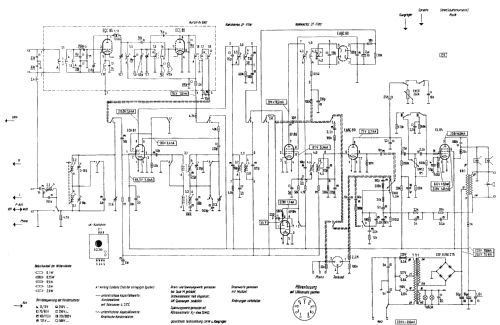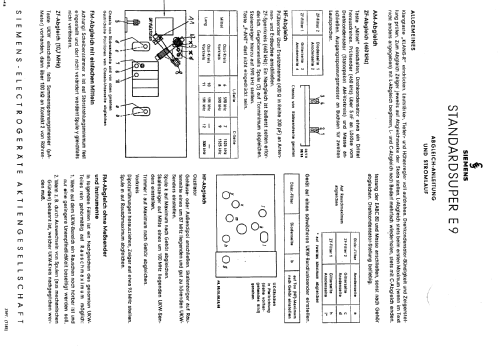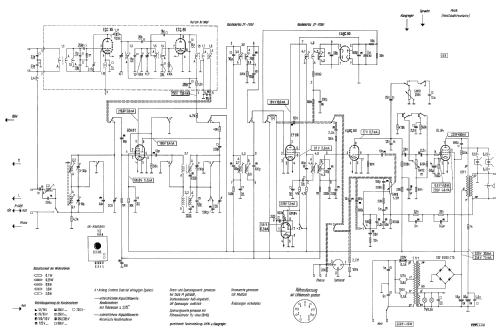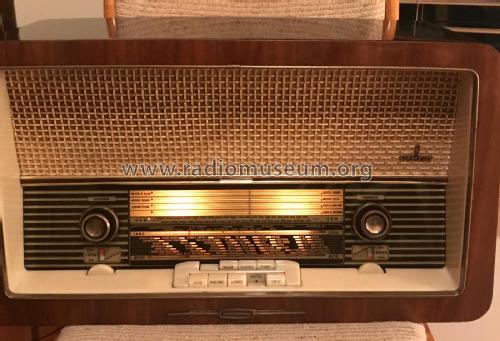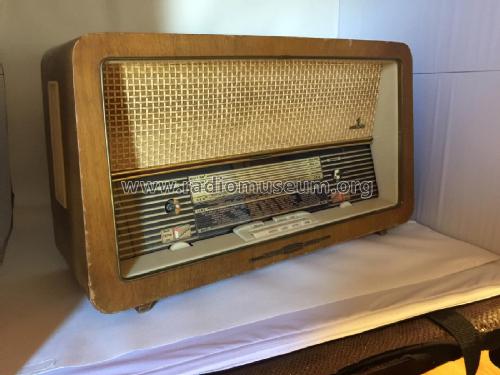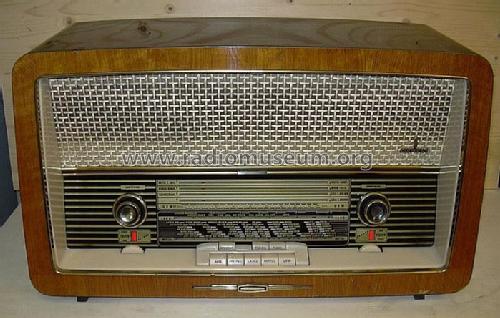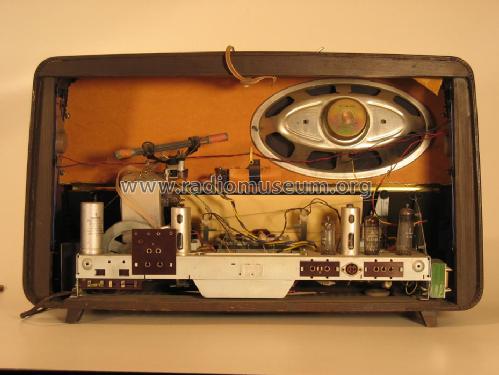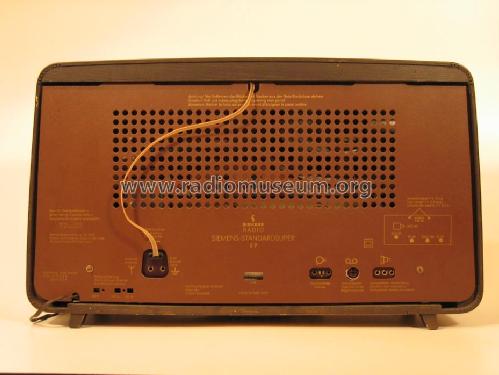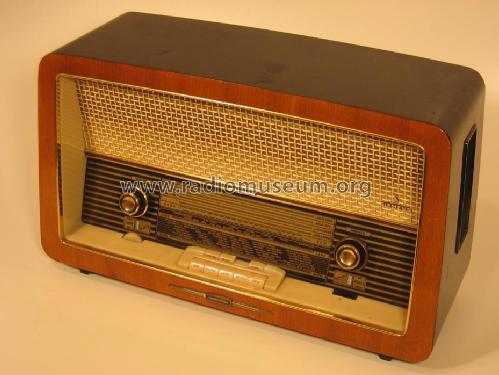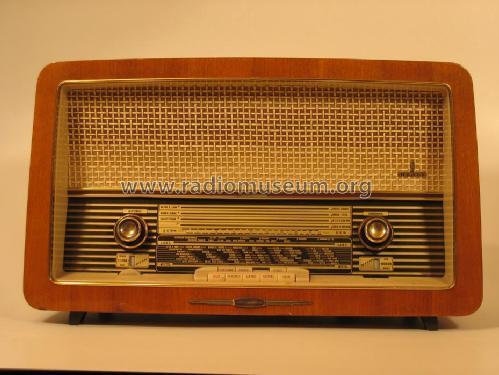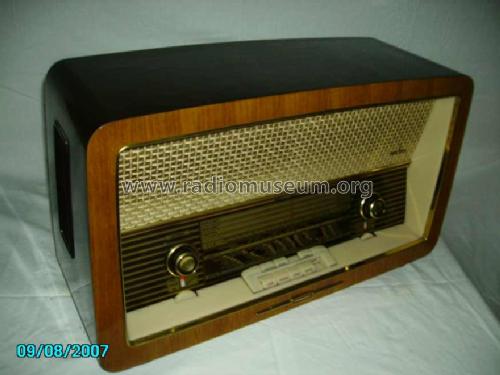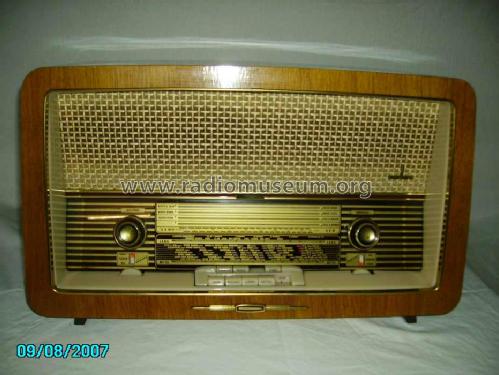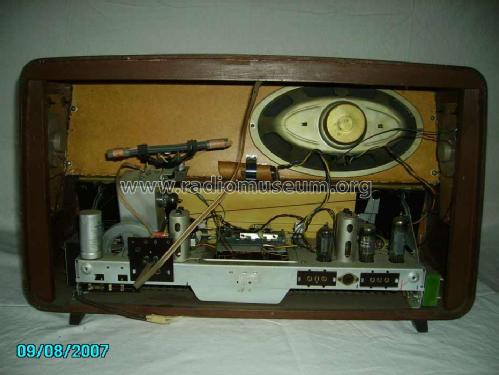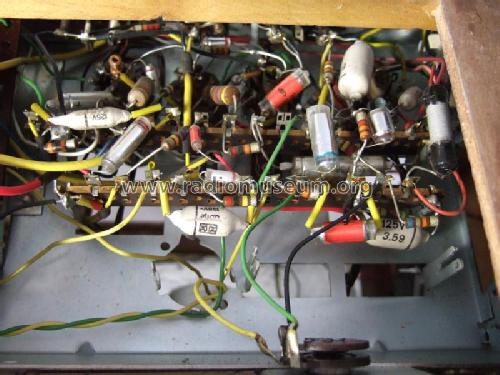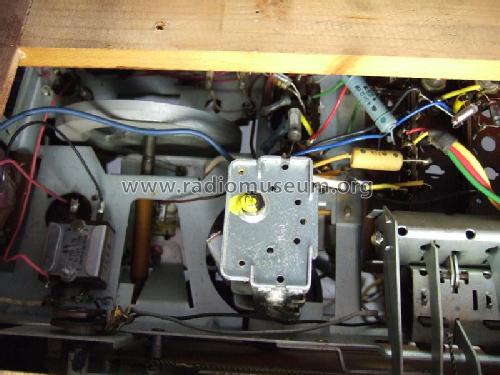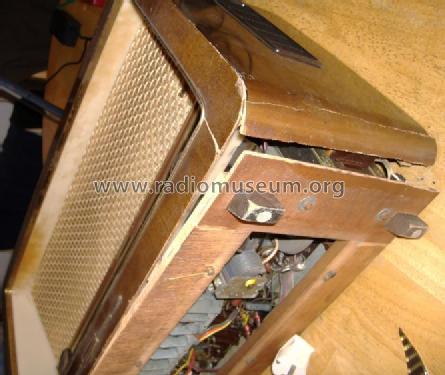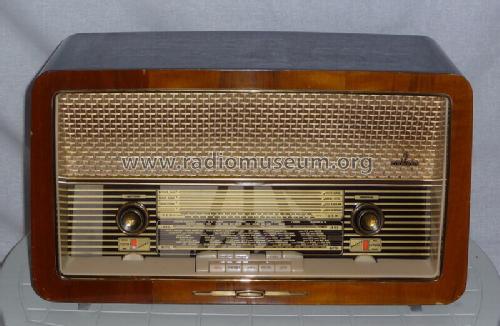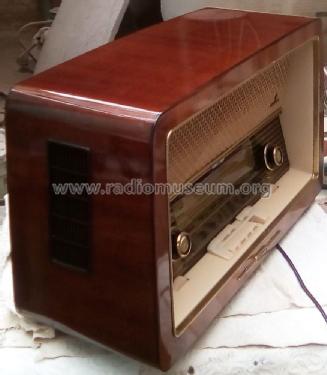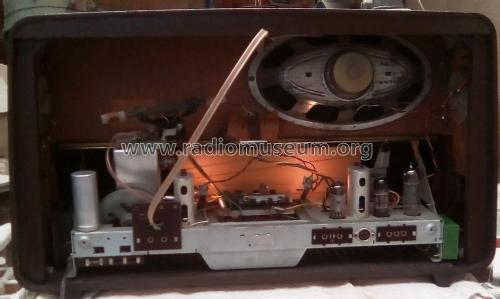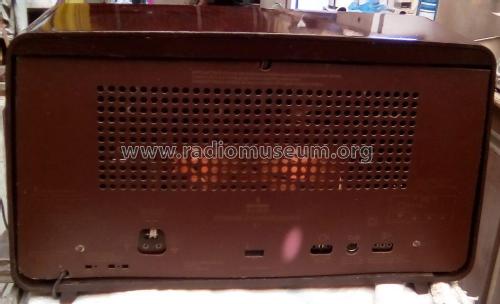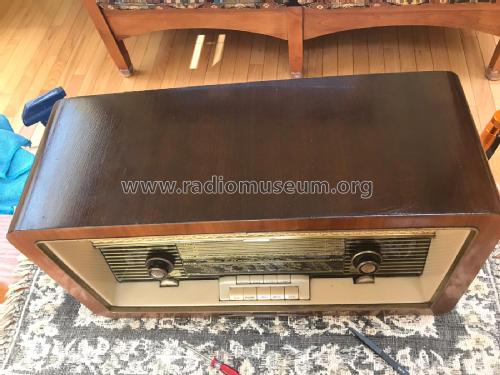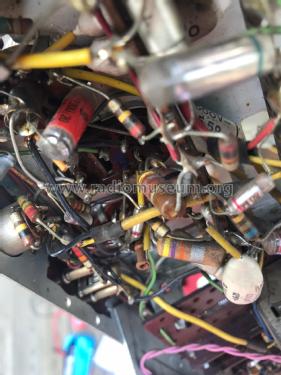- Country
- Germany
- Manufacturer / Brand
- Siemens (& Halske, -Schuckert Werke SSW, Electrogeräte); Berlin, München
- Year
- 1959/1960
- Category
- Broadcast Receiver - or past WW2 Tuner
- Radiomuseum.org ID
- 22167
Click on the schematic thumbnail to request the schematic as a free document.
- Number of Tubes
- 6
- Main principle
- Superheterodyne (common); ZF/IF 460/10700 kHz
- Tuned circuits
- 6 AM circuit(s) 10 FM circuit(s)
- Wave bands
- Broadcast, Long Wave and FM or UHF.
- Power type and voltage
- Alternating Current supply (AC) / 110; 127; 220 Volt
- Loudspeaker
- 3 Loudspeakers
- Power out
- 5 W (unknown quality)
- Material
- Wooden case
- from Radiomuseum.org
- Model: Standardsuper E9 - Siemens & Halske, -Schuckert
- Shape
- Tablemodel with Push Buttons.
- Dimensions (WHD)
- 600 x 350 x 210 mm / 23.6 x 13.8 x 8.3 inch
- Notes
- abschaltbare Ferritantenne.
- Net weight (2.2 lb = 1 kg)
- 8 kg / 17 lb 9.9 oz (17.621 lb)
- Price in first year of sale
- 289.00 DM
- External source of data
- Erb
- Source of data
- HdB d.Rdf-& Ferns-GrH 1959/60
- Other Models
-
Here you find 2514 models, 2111 with images and 1325 with schematics for wireless sets etc. In French: TSF for Télégraphie sans fil.
All listed radios etc. from Siemens (& Halske, -Schuckert Werke SSW, Electrogeräte); Berlin, München
Collections
The model Standardsuper is part of the collections of the following members.
Forum contributions about this model: Siemens & Halske, -: Standardsuper E9
Threads: 2 | Posts: 34
The FM or UKW band is generating a big noise and the volume goes up and down as I keep dialing...In other words the UKW is not tuning to any stations but very noisy... Any idea how to fix it.. I am new to this world of old tube radio and not sure how to find the bad capacitor that I can change to fix the problem. The long and medium waves are working fine.
David Erali, 26.Aug.18
The FM dipole is only going to pickup "E" field on MW & LW. I have read people suggesting that the FM ant switch is to "improve" AM reception. Well it does.
But not by picking up more signal from the Radio station. The Ferrite Rod is the main aerial for AM bands. The E field is very much higher at Lower frequency when it's a very short aerial in the "Near Field", this means the FM dipole will pick up very local interfence from SMPSU very well but the AM radio station will be poor reception on it.
Thus by rotation of the Ferrite Rod and trying both orientations of the dipole (to reverse phase) the local interference can be greatly reduced with perhaps just a small reduction in the desired signal. The local SMPSU Interference is greatly reduced. Presumably in 1959 the local interference would have been TV line Drive harmonics of 15.625KHz in Germany and any local motors like a fridge compressor.
Michael Watterson, 11.Jan.12
